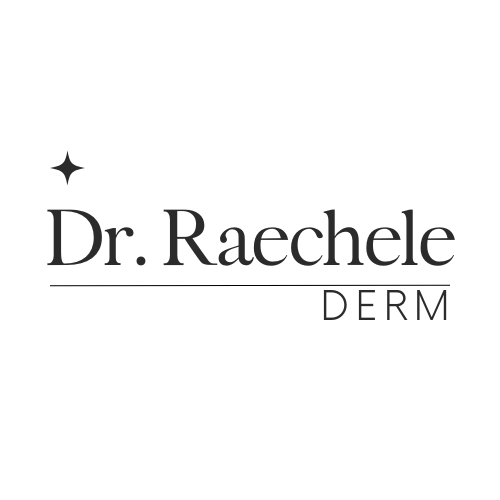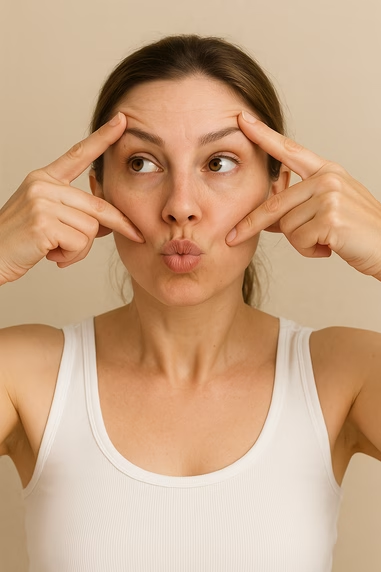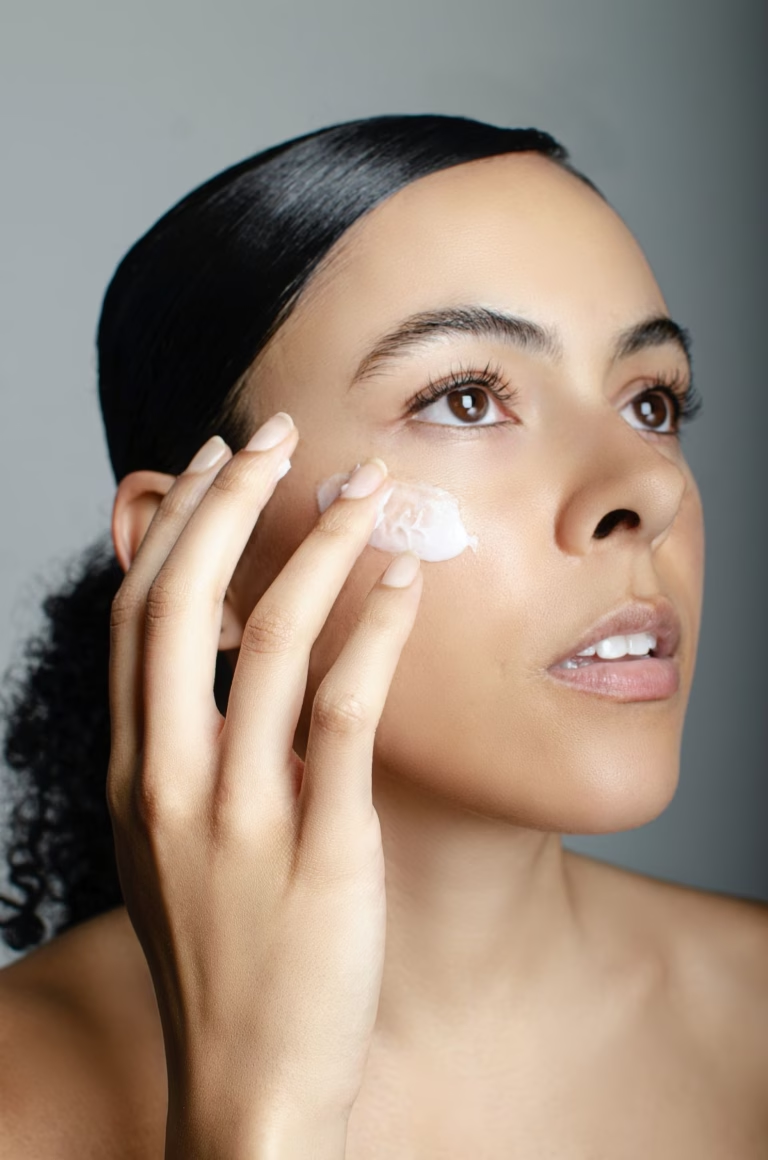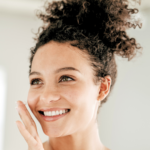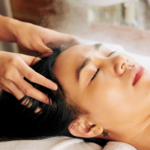Acne is one of the most common skin conditions, affecting millions of people worldwide. While there are countless products available to treat acne, two ingredients often dominate the conversation: benzoyl peroxide vs. salicylic acid. Product with these active ingredients line the skincare aisle at most drug stores. Both are widely praised for their effectiveness, but they work in very different ways. So, how do you determine which one is the best choice for your skin?
We’ll break down the differences between benzoyl peroxide and salicylic acid, their benefits, potential side effects, and tips for incorporating them into your skincare routine. By the end, you’ll have a clear understanding of which acne-fighting powerhouse is best for your unique skin needs.
If you’re looking for a quick and detailed discussion about benzoyl peroxide vs. salicylic acid, and what’s best for you—be sure to check out my video here:
🌿 Watch & Learn:
I’ve put together a quick, easy-to-follow video if you’d like a deeper dive into this topic.
✨ You’ll also find new weekly tips on stress-free skincare, hair wellness, and simple, science-backed beauty — don’t forget to subscribe here!
What Is Benzoyl Peroxide?
How Benzoyl Peroxide Works
Benzoyl peroxide is a powerful ingredient that targets acne at its source. It works by:
- Killing acne-causing bacteria: Benzoyl peroxide eliminates Cutibacterium acnes, the bacteria responsible for inflamed pimples and pustules.
- Reducing oil production: It helps regulate excess sebum, which can clog pores.
- Helps shed dead skin cells: Benzoyl peroxide clears away dead skin cells, preventing them from mixing with oil and creating blockages.
Unlike many other treatments, benzoyl peroxide addresses multiple causes of acne simultaneously, making it a versatile option for many skin types.
Benefits of Benzoyl Peroxide
- Effective for mild and moderate to severe acne.
- Reduces inflammation quickly.
- Works well in spot treatments or all-over application.
Potential Side Effects
- Skin dryness and peeling.
- Redness and irritation.
- Risk of bleaching fabrics or hair.
Best Products Featuring Benzoyl Peroxide
Look for cleansers, spot treatments, and leave-on creams containing benzoyl peroxide at concentrations between 2.5% and 10%. Lower concentrations are often as effective as higher ones but cause less irritation. Popular brands include:
- La Roche-Posay Effaclar Duo: Loved for its gentle yet effective formula, this product combines benzoyl peroxide with soothing ingredients to minimize irritation.
- Clean & Clear Persa-Gel 10: A budget-friendly spot treatment that delivers quick results for inflamed breakouts.
- Neutrogena On-the-Spot Acne Treatment: Known for its low concentration and minimal irritation, ideal for sensitive skin.
- Maximum strength formula contains 10% Benzoyl peroxide
- Highest over the counter Benzoyl peroxide wash available
What Is Salicylic Acid?
How Salicylic Acid Works
Salicylic acid is a beta-hydroxy acid (BHA) that penetrates deep into the pores to:
- Exfoliate the skin: It removes dead skin cells and promotes cell turnover.
- Unclog pores: Salicylic acid dissolves the “glue” that binds dead cells, clearing blockages.
- Reduce oiliness: By regulating sebum, it minimizes blackheads and whiteheads.
Salicylic acid is oil-soluble, meaning it can penetrate deep into the pores to clear out impurities. This makes it an excellent choice for individuals dealing with non-inflammatory acne.
Benefits of Salicylic Acid
- Gentle enough for daily use on mild to moderate acne.
- Effective for blackheads and whiteheads.
- Improves skin texture over time.
Potential Side Effects
- Mild dryness or irritation for sensitive skin types.
- Requires consistent use for noticeable results.
Best Products Featuring Salicylic Acid
Salicylic acid is commonly found in toners, serums, and acne spot treatments at concentrations ranging from 0.5% to 2%. Brands like:
- Paula’s Choice Skin Perfecting 2% BHA Liquid Exfoliant: A cult favorite for its ability to unclog pores and smooth skin texture.
- The Ordinary Salicylic Acid 2% Solution: Affordable and effective, ideal for targeted application.
- CeraVe Renewing SA Cleanser: Combines salicylic acid with ceramides and hyaluronic acid for gentle exfoliation without over-drying.
Benzoyl Peroxide vs. Salicylic Acid: Key Differences
| Aspect | Benzoyl Peroxide | Salicylic Acid |
|---|---|---|
| Best For | Inflammatory acne (pimples, pustules) | Non-inflammatory acne (blackheads, whiteheads) |
| Mechanism of Action | Kills bacteria, reduces oil, exfoliates | Penetrates pores, dissolves debris |
| Speed of Results | Fast (visible improvement in days) | Gradual improvement (weeks) |
| Skin Types | Normal to oily; may irritate sensitive skin | All skin types, especially oily |
| Common Formats | Cleansers, gels, spot treatments | Toners, serums, leave-on products |
Additional Considerations
Benzoyl peroxide is sometimes recommended for short-term, targeted use, while salicylic acid may be more suitable for long-term maintenance. For example, if you have a breakout before a big event, benzoyl peroxide can provide rapid relief.
How to Choose the Right Treatment: Benzoyl Peroxide vs. Salicylic Acid
Consider Your Acne Type
- If you experience red, inflamed breakouts, benzoyl peroxide may be more effective.
- If you struggle with blackheads or whiteheads, salicylic acid could be a better choice.
Think About Your Skin Sensitivity
- Benzoyl peroxide is stronger but more likely to cause irritation.
- Salicylic acid is gentler for many people.
Pairing With Other Skincare Ingredients
To maximize results, pair these active ingredients with:
- Moisturizers: Look for products containing ceramides or hyaluronic acid to combat dryness.
- Sunscreen: Both ingredients can make your skin more sensitive to the sun. Use a broad-spectrum SPF daily.
- Niacinamide: This ingredient soothes irritation and helps repair the skin barrier.
Your dermatologist may also recommend other prescription treatments like topical retinoids or antibiotics to use along with benzoyl peroxide or salicylic acid.
Why Not Both?
Some skincare routines benefit from incorporating both ingredients. For example:
- Use a salicylic acid cleanser to unclog pores.
- Follow up with a benzoyl peroxide spot treatment for inflamed pimples.
Pro Tip: Avoid using both at the same time to minimize irritation. Alternate them on different days or consult a dermatologist for a customized routine.
Lifestyle Tips to Complement Your Acne Treatment
- Diet: Incorporate foods rich in antioxidants, like berries and green tea, to reduce inflammation.
- Hydration: Drink plenty of water to keep your skin hydrated and support detoxification.
- Stress Management: Stress can worsen acne. Practice mindfulness, yoga, or meditation to manage it effectively.
- Consistent Sleep: Poor sleep disrupts your skin’s repair processes. Aim for 7–8 hours per night.
Frequently Asked Questions About Benzoyl Peroxide vs. Salicylic Acid
Can I Use Benzoyl Peroxide and Salicylic Acid Together?
Yes, but with caution. Combining them can be harsh, so it’s best to alternate their use or apply them to different areas of the face.
Which Is Better for Sensitive Skin?
Salicylic acid is generally better for sensitive skin because it’s less drying and irritating than benzoyl peroxide.
How Long Does It Take to See Results?
- Benzoyl peroxide: Results may appear within a few days.
- Salicylic acid: Expect noticeable improvements after a few weeks of consistent use.
Are These Ingredients Safe for Teenagers?
Yes! Both ingredients are widely used in over-the-counter products designed for teenage acne. Start with lower concentrations to test tolerance.
What Should I Avoid When Using These Ingredients?
- Avoid combining them with retinoids or other strong exfoliants unless directed by a dermatologist.
- Steer clear of alcohol-based toners, which can exacerbate dryness and irritation.
Stay in the Know. Subscribe.
